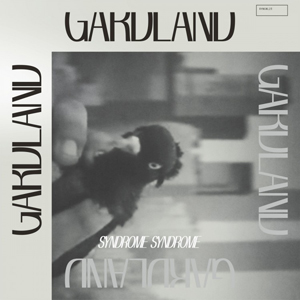Gardland Syndrome Syndrome
Perhaps more than any other electronic genre, techno has long been an especially functional form […]

Perhaps more than any other electronic genre, techno has long been an especially functional form of dance music, largely serving its primary purpose when utilized in the confines of a club or any other dancefloor setting. Oftentimes, this is exactly how it should be; the kind of high-tempo hypnotism and bespoke repetition techno offers is a nuanced experience meant for those seeking the meditative state of mind it can induce. But in recent memory, the less functional ends of the genre have also been explored at length, with artists like Actress, Vessel, and Andy Stott contorting its structure and smearing its edges into a more album-appropriate style of music, a permutation of techno suitable for the kind of concentrated listening that the bustle of a dancefloor doesn’t usually allow. Young Australian duo Gardland operates in a similar vein on its debut LP, Syndrome Syndrome, though what producers Alex Murray and Mark Smith actually managed to uncover is a sweetspot straddling a techno middle ground that relies as much on form as it does function.
Gardland outlined the process which brought about Syndrome Syndrome when speaking with UK online magazine Dummy, explaining how the album was recorded in a small town outside of Sydney over the course of 10 days while each of its members was unemployed. Murray also described the music in that interview as “exploration with a four-four kick drum underneath.” Listening to the LP, both the duo’s workmanlike efficiency and languid search for any kind of finite resolution are readily apparent. A fine example is “Katarakt,” with its subterranean undulations blindly pushing toward an unspecified endpoint and screeching, phantasmic synths drifting and morphing through its dark, hardware-specific groove. Tracks like that, “Magicville,” and “Ode to Ode” give the illusion of forward movement when everything is in fact churning around a fixed point as wisps of analog timbres and atonal noise fly past in the background. It’s a simple and satisfying effect, like an old driving scene shot using rear projection, and grants most of Syndrome Syndrome the charming versatility usually found in the sort of electronic music that appeals to record bags and record collections alike.
As its quick and focused creation implies, Syndrome Syndrome is generally formulaic, but Murray and Smith have somehow turned this to their advantage. For every lackluster tune the duo produced in that manner (the title track, for instance, makes for a jumbled and unexciting start to the record), there are powerful and entrancing gems like “One in None” and “Nothing But Not Zero,” the pitch-perfect results of Gardland refining its sound pallette and “jam session” style of songwriting through consistency and repetition. A dependence on formula is also what gives Syndrome Syndrome a rewarding sense of coherency. Whether it’s “Hell Fur”‘s slow-grooving jaunt through gnarled and nightmarish soundscapes or spelunking into the damp and dubby crags of dancefloor jam “Ride Wid Me,” Gardland’s path is always the same—only the scenery changes, and even those differences are decidedly subtle. In this way, the LP’s 11 tracks play like a string of variations on two or three ideas, but most of Murray’s and Smith’s experimenting is strong enough that Syndrome Syndrome sounds more like a collection of singles written by a veteran outfit dedicated to perfecting one beloved sound.

